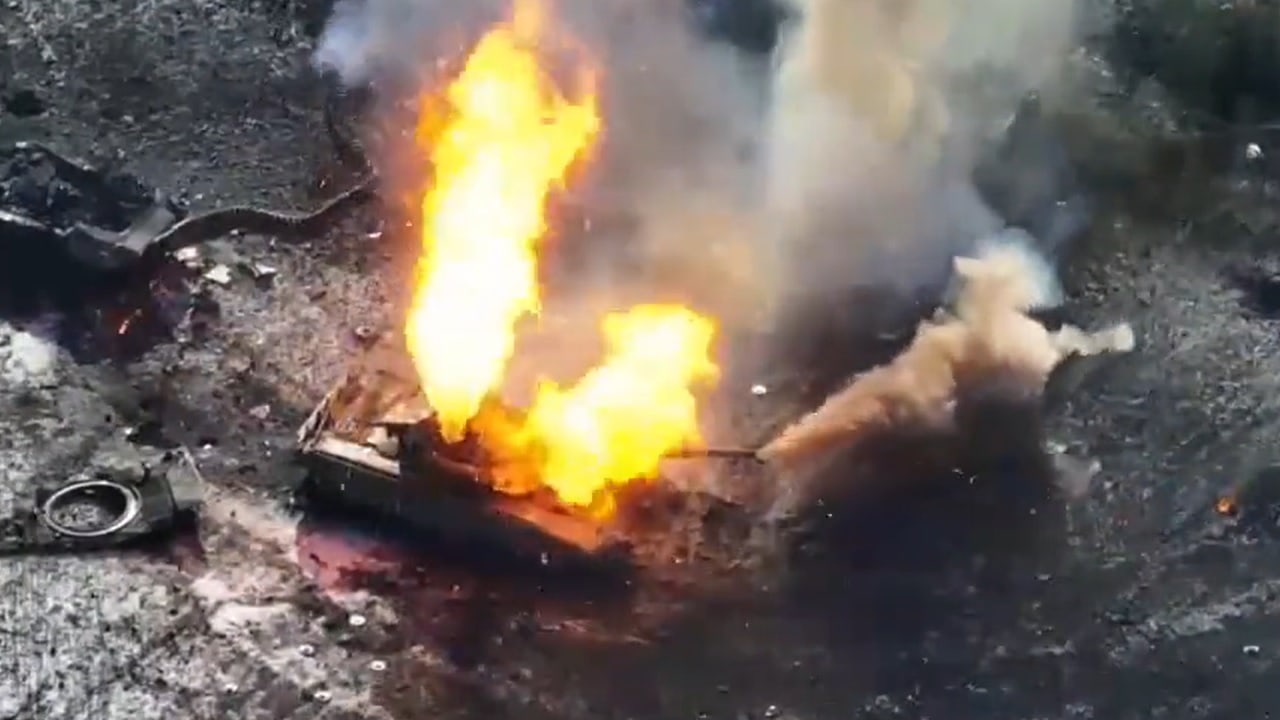Maya Carlin

The presence of inflatable main battle tanks in Ukraine has made headlines this week after images of balloon decoys spread on social media. According to reports, a Ukrainian drone operator spotted the Russian army’s 45th Separate Camouflage Engineer Regiment deploying inflatable T-72 tanks along the southern front of the war. Decoy units of the High-Mobility Artillery Rocket System and other heavy weaponry were also discovered.
The Kremlin is hoping Kyiv will diminish its ammunition stockpiles by mistaking the decoys for real military equipment. Considering the dismal state of Moscow’s real tank fleet, this strategy appears to be more of a last-ditch effort to safeguard its existing MBTs.
Since the onset of the invasion against Ukraine, Russia is estimated to have lost at least half of its tank arsenal. From its more modern T-90s to Soviet-era T-72s, and T-80s, Moscow’s armored vehicles have struggled to survive against Ukraine’s use of advanced anti-tank weaponry.
The U.S. and its North Atlantic Treaty Organization (NATO) allies have provided scores of military equipment to aid Kyiv’s defensive efforts. Over the last year and a half, Ukrainian forces have received sophisticated anti-tank systems like the FGM-148 Javelin and HIMARS, which have particularly supported its offensive abilities. Earlier this year, the London-based Institute for Strategic Studies estimated that Russia’s inventory of T-72s has shrunk by 50 percent, while its inventory of T-80s has shrunk by more than two-thirds.
Another T-72 Destroyed by Ukraine
Amidst Kyiv’s ongoing counter-offensive, Russia’s armored vehicles continue to suffer. This week, the open-source intelligence group Ukraine Weapons Tracker released footage of yet another T-72 MBT destroyed. In the short clip published on Twitter, a Ukrainian-launched FPV loitering munition was apparently behind the attack, which occurred near Kreminna, Luhansk Oblast.
Specs and Capabilities
Although the T-72 has been around for five decades, the tank platform continues to play a big role in Russia’s armored corps. During the Cold War, the MBT was designed to counter its NATO counterparts.
The T-72 “Ural” would soon become the most prominent tank operated among Warsaw Pact countries prior to the collapse of the Soviet Union. Equipped with a range of improvements, the Ural also caught the interest of other foreign militaries, including Iran, Iraq, India, and Syria.
A 125mm smoothbore gun and a 12.7mm anti-craft machine gun are fitted on the T-72, enabling the tank to attack low-flying targets. While explosive reactive armor and armor plating protect the tank better than the exterior of its T-62 predecessor, the Ural is still vulnerable to more advanced anti-tank systems.
Over the years, the T-72 underwent a series of facelifts in order to remain relevant in more modern threat climates. The latest iteration sports several enhancements, which have been detailed by Business Insider: “The relatively new Kalina fire-control system with an automatic tracker of enemy tanks and its ballistic computer is top-notch. It has a laser range finder with improved thermal sights. It can fire the latest munitions such as armor-piercing sabots and high-explosive rounds.”
Once Kyiv receives its incoming shipments of M1A1 Abrams and additional British Challengers and German Leopards, Moscow will be at an even greater disadvantage in terms of MBT power.
No comments:
Post a Comment